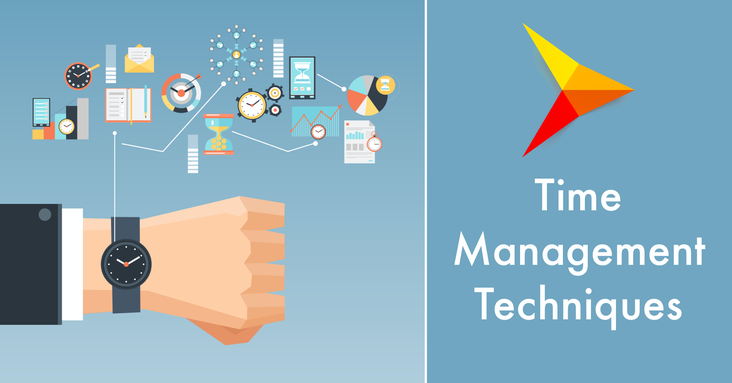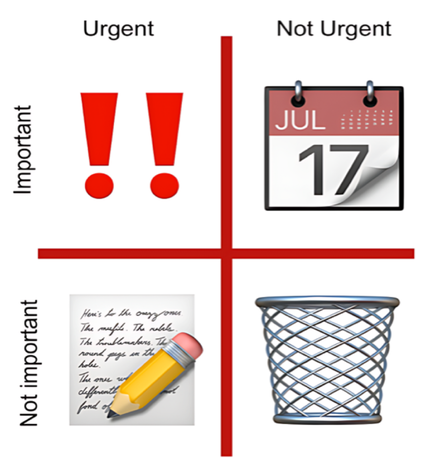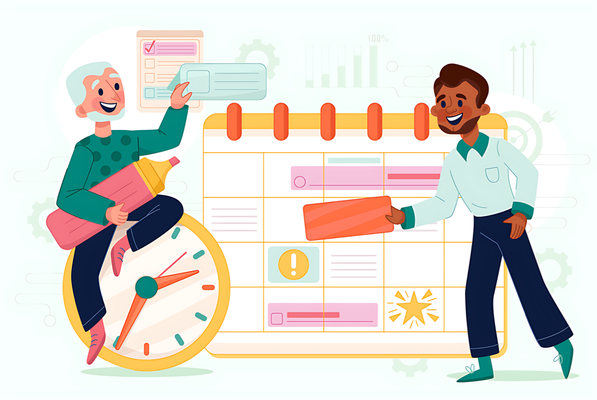6 Time Management Techniques to Help You Succeed
Jul 28, 2023 by Vreny Blanco · 9 min read · Time Management

Effective time management is a valuable skill that allows you to define and prioritize your projects, structure your days and focus on what’s important to you. By taking control of your time, you will reduce stress and anxiety, your work will be more enjoyable and efficient, and you will have extra time to rest and have fun.
In our blog article 16 Time Management Hacks to Boost Your Productivity, we provided 16 practical strategies to improve time management skills.
In this blog post, I will present six time management techniques to help you stay focused and increase productivity.
Get ready to experiment and discover which technique works best for you. Let’s dive in!
1. Pareto Principle (The 80/20 Rule)
The 80/20 rule is a technique created by Italian economist Vilfredo Pareto. This rule suggests that 80% of your results come from 20% of your efforts.1 2 Pareto’s analysis aims to help you prioritize the most relevant tasks that generate the best results.1
This Is How the Pareto Principle Works
- List the problems you are facing.1
- Identify the root cause of each problem.1
- Assign a score to each problem: A number between 1-10 or actual monetary value.1
- Group similar problems together.1
- Add up the score of each group: The group with the highest score is the issue you should work on first.1
- Take action.1
This technique will help you identify your priorities and avoid wasting time on less critical tasks.

2. Pomodoro Technique
The Pomodoro Technique is a simple and effective time management method created by Francesco Cirillo.3 It is a strategy that breaks down your workday into intervals, separated by short breaks.1 4 5 Each interval is known as a Pomodoro.1
Here’s How the Pomodoro Technique Works
- Choose a task that you want to complete.1 6
- Set a timer (for example, for 25 minutes).1 6
- Concentrate only on that task until the time runs out.1 6
- When the timer rings, take a 5-minute break. Use this time to relax, enjoy a coffee or do something unrelated to work.1 6
- Resume concentrated work.
- After completing four pomodoros, reward yourself with a longer break, about 20 to 30 minutes.1 6
By using this technique, you can transform your relationship with time, making it easier to achieve your goals without feeling overwhelmed or anxious.3

3. Eisenhower Matrix
The Eisenhower Matrix is a simple four-quadrant chart designed to help you sort and prioritize your tasks based on their urgency and importance.5
This Is How the Eisenhower Matrix Works
- Create a four-quadrant chart (See the image below).
- Sort your tasks: Important vs. not important and urgent vs. not urgent.1 5
- Urgent tasks are the ones that demand immediate attention.1 5
- Important tasks are the ones that align with your long-term goals and values.1 5
Once you’ve categorized your tasks, you can approach each category as follows:
- Urgent and important: Prioritize these tasks and do them first.1 5
- Urgent and not important: If possible, delegate these tasks. If not, address them next after completing the important ones.5
- Not urgent and important: Schedule time for these on your calendar.5
- Not urgent and not important: These tasks don’t require your attention and can be removed from your to-do list.1 5
Ideally, you should only work on tasks in the top two quadrants.1 5

4. Time Blocking
This is my favorite technique!
Time blocking is a method that helps you structure your day by dividing it into specific segments of time.5 You can assign blocks of time for different tasks or activities. During these designated periods, you should eliminate distractions and focus solely on that task.
You can designate a specific duration for everything you do from the moment you wake up (e.g. eating breakfast, studying, sports, etc.).1
This Is How Time Blocking Works
- List all your tasks and activities for the day.
- Calculate how much time you need for each task.
- Create two columns: in the left column, write down each hour of the day, and in the right column, create blocks of time, such as half-hour or one-hour chunks.1
- Write down your tasks in the corresponding time blocks.1
- Add buffer time between blocks to allow for flexibility and adjustments during the day.1
You can also use digital tools like Google Calendar to assign blocks of time to daily or regular activities, such as going to the gym, eating, or walking your dog. And then, plan your other obligations and projects around them.
With time blocking, you can establish a well-structured routine, increasing your productivity and reducing decision fatigue.

5. Eat That Frog
A quote from Mark Twain inspires the “Eat That Frog” technique: “Eat a live frog the first thing in the morning, and nothing worse will happen to you the rest of the day.” It’s all about tackling your most challenging tasks early in the day to clear the way for more enjoyable activities or projects.1
How to Use the “Eat That Frog” Technique
- Set a clear goal. What do you want to achieve most?1
- Write it down.1
- Set a deadline.1
- List all the actions you need to take to reach your goal.1
- Organize the list based on priority. The most critical tasks – usually the toughest ones – are your “frogs”.1
- Take action. If you have multiple challenging tasks, start with the most difficult one.1
- Repeat this process daily.1

6. Parkinsons Law
Parkinson’s Law, named after British historian Cyril Northcote Parkinson, highlights, “Work expands to fill the time available for its completion.” In simpler terms, the more time you give yourself to finish a task, the longer it tends to take.1
This technique helps set realistic deadlines for more efficient work, avoiding unnecessary delays.
To Use Parkinson’s Law Effectively, Follow These Steps:
- Make a list of your tasks and estimate the time it usually takes to complete them.
- Challenge yourself by setting a shorter deadline for each task, giving yourself half the time it usually takes. Treat these deadlines as essential and commit to meeting them.
The main goal is to enhance your efficiency by working in shorter bursts of time. Here are some time management tips to get you started:
- Experiment with working without a computer charger. This will create a sense of urgency and help you complete projects before your computer runs out of battery.1
- Aim to finish tasks earlier in the day. Try to finish by noon instead of waiting until midnight.1
- Set clear task deadlines to stay focused and avoid procrastination.1
- Allocate limited time for specific tasks. For instance, give yourself only 20 minutes in the morning to answer emails.1

Eliminate Digital Distractions
Selecting the right time management technique is crucial for boosting productivity. However, to be truly effective, it’s equally important to minimize distractions, particularly digital ones. Social media, email alerts, YouTube, and unnecessary web browsing can all be significant interruptions.
Solutions to Reduce Digital Distractions
- Use an App and Website Blocker: Tools like 1Focus are highly effective at limiting access to distracting websites and applications. They allow you to block specific sites and apps for designated periods, fostering a more productive work environment. With these tools, you can restrict access to platforms such as YouTube, Netflix, adult content, video games, text messaging, and email.
How 1Focus Can Help You
-
Block Distracting Websites and Apps: 1Focus enables you to restrict access to specific websites and apps that disrupt your productivity at designated times. This feature helps you maintain focus and steer clear of the procrastination trap.
-
Schedule Your Blocking Sessions: With 1Focus, you can plan your blocking sessions in advance, allowing you to effectively organize your work and break times to maximize productivity.
Other Tips for Avoiding Digital Distractions
-
Turn Off Notifications: Disable notifications on your smartphone and computer to prevent interruptions.
-
Set Specific Times to Check Email and Social Networks: Allocate specific times during the day to check your email and use social networks, rather than constantly checking them.
-
Optimize Your Work Environment: Design your workspace to enhance concentration. A tidy desk and a quiet environment can significantly boost your focus.
By combining an effective time management method with strategies to minimize distractions, you can cultivate a work environment that promotes high productivity and efficiency.
Conclusion
Sometimes, we get so wrapped up in work that we forget that our private life deserves equal or greater attention. This is where managing your time and maximizing your productivity plays a crucial role.
You can make the most of your time by practicing the techniques described in this blog post. The Pomodoro Technique, for example, helps you stay focused and avoid burnout by working in concentrated intervals followed by short breaks. Time blocking, on the other hand, allows you to create a well-structured schedule that keeps you on track. With Eat That Frog, you learn the importance of tackling your most challenging tasks first, which helps you overcome procrastination and maintain motivation. And Parkinson’s Law reminds you to set realistic deadlines to remain efficient and avoid unnecessary delays.
Experiment to find out what works best for you and incorporate these time management techniques into your daily routine. You’ll make significant progress toward your goals and find a better work-life balance.

Further Reading
For more insights on how to improve your time management skills, check out our article: 16 Time Management Hacks to Boost Your Productivity.
Subscribe to the 1Focus Blog RSS feed and ensure you’re always equipped with the latest productivity hacks. Easily add it to your podcast app or feed reader.



